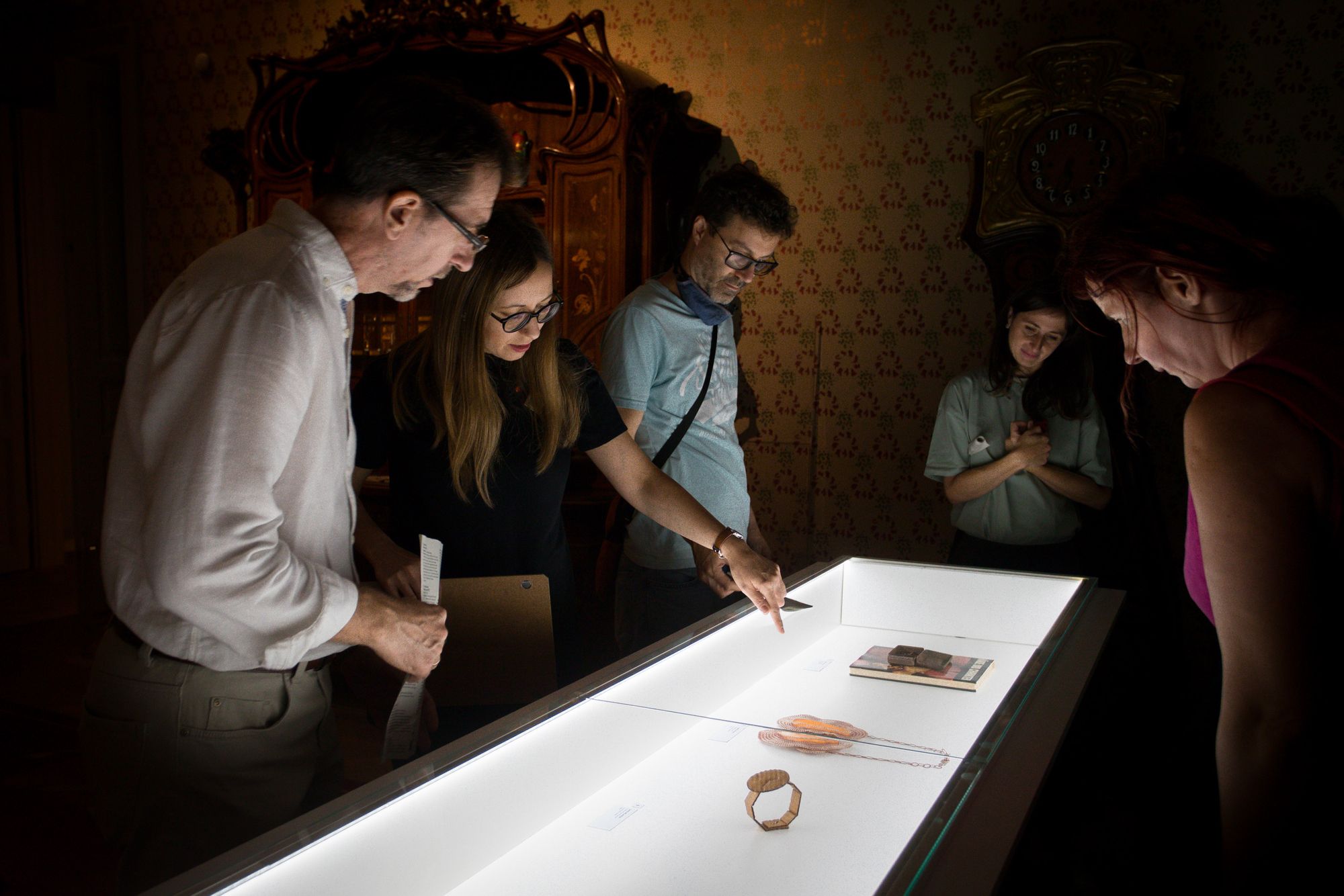“IDOL” exhibition at Budapest Jewelry Week
TED NOTEN in the “IDOL” exhibition at Budapest Jewelry Week
An illusory necklace, a brooch resembling wire fences, and a duck head in solid gold—including these and other unusual pieces are on display at the “IDOL” exhibition at Budapest Jewelry Week. The show, which runs until September 12, features work by some of the world’s best-known jewelry designers and encourages us to think differently about the world of jewelry.
The short answer to the question in the title is yes: it is very much possible to turn chewing gum into jewelry—and it is not a gimmick or an attack on jewelry design (far from it). For a longer answer, and mostly for the explanation on the questions “How?” and “Why?”, you should visit the “IDOL” exhibition at the Budapest Jewelry Week.

While last year’s central exhibition took place in a clean white cube exhibition space, this year’s “IDOL” exhibition—continuing the tradition started two years ago—moved into the walls of the Ráth György villa, which is dressed in Art Nouveau from top to bottom. This intriguing, anachronistic atmosphere may at first be disturbing to many, but in fact, it can also reveal a fascinating dialogue between the lamps shaped like graceful female figures, the floral home textiles, the furniture, and the contemporary jewelry resting under glass.

This apparent contrast, the meeting of past and present, challenges the viewer: the first of these is to find the galleries where the pieces of the “IDOL” exhibition rest in the “Art Nouveau noise” (fortunately, the printed guide at the entrance helps to orientate and at the same time to interpret the jewelry one sees). The second challenge posed by the exhibition is the concept of beauty itself, and its relative nature, by which we must understand not only individual taste but also the spirit of the age itself.

And, of course, we should remind ourselves: the Art Nouveau of the turn of the century might once have seemed as progressive as Otto Künzi’s jewel, “The Red Spot,” was in 1980. This brooch is basically a red drawing pin that you can attach to your clothes with a piece of rubber—both simple, everyday materials that become jewelry by the moment of wearing, by the wearer’s intention. A red dot marking the artworks sold in a gallery, with which Künzli intended to mark the visitors of an exhibition in Basel (the concept was not accepted by the gallery owner, and the exhibition was canceled).

With everyday materials, designers seek to liberate jewelry: contemporary jewelry—which is both fine and applied art—is no longer made valuable by using precious metals or gemstones. The rules of traditional goldsmithing have been broken in recent decades by several artists, including Lisa Walker. She made glue, one of the items on the jewelry designers’ no-go list, a prominent feature of one of her pieces.

Our absolute favorite is Ted Noten’s 1998 creation, which was placed unusually close to the floor, not by coincidence. “Chew your brooch!” is a set where the designer encourages the user to engage in the process of creation: in this case, chewing a piece of gum, where the chewed gum is returned to Noten’s workshop, who pours it out in silver or gold, thus preserving the gesture of chewing, unique in every way and unrepeatable at the same time.

As part of the Budapest Jewelry Week, in addition to the exhibition in the villa, there will be a number of exciting activities for contemporary jewelry lovers, and of course, for those who are a little shy about the subject. Of the exhibitors, Ruudt Peters will visit Budapest in person, Alice Floriano and Bryna Pomp will give a presentation online, and the winner of the FISE award for 2020 (then called Jewellery Night Budapest), Rita Besnyői, will also present her contemporary jewelry at the “I follow rivers” exhibition. During the “IDOL” exhibition, guided tours will be held on several occasions by the organizers. It is recommended to register as soon as possible as places fill up quickly.
The organizers of the Budapest Jewelry Week reveal more behind-the-scenes secrets in the Makers of Budapest podcast (in Hungarian). Check it out!
Photos: Boglárka Zellei



